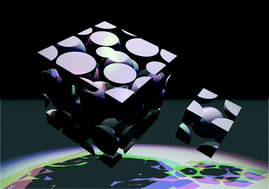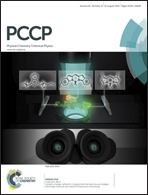Diversity of transition pathways in the course of crystallization into ice VII†
Abstract
We report various types of pathways emerging in the course of freezing into a high pressure ice VII by large-scale molecular dynamics (MD) simulations at 10 GPa, 425 K. Some trajectories showed an apparently stepwise transition via the unique metastable “phase” in accordance with Ostwald's step rule. The metastable structure was identified as one of the tetrahedrally close-packed structures having the nature of a rotator phase (plastic phase). The unit cell consists of 21 water molecules that has not yet been reported by simulation or by experiments. Structure analysis of numerous trajectories reveals that the nucleation of ice VII easily occurs at the grain boundaries of the metastable embryos, known as epitaxy-mediated transformation in line with Ostwald's step rule. The size of the grain boundaries is thus responsible for the lifetime of the metastable phase. On the other hand, once the embryo of ice VII appears prior to that of the metastable phase in liquid, direct transition to ice VII takes place. We also show that the plastic behavior of the metastable phase is not uniform but is sensitive to the interaction strength of adjacent molecules and the local structure, thus we call “partially plastic ice”.


 Please wait while we load your content...
Please wait while we load your content...